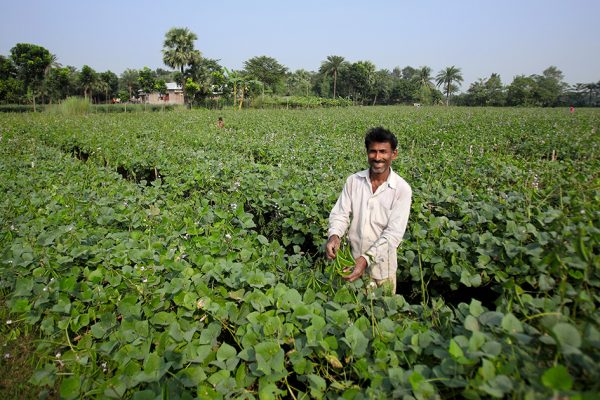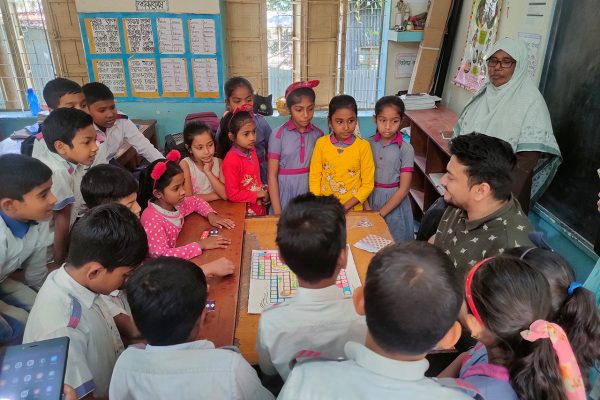“Measuring the Impact of Microfinance: Taking Another Look”
Reading Time: 3 minutes
Grameen Foundation, J.P. Morgan and WAM-NY recently presented a panel discussion on poverty reduction using microfinance. At the event, Grameen Foundation released a review of the most recent research examining the effects of microfinance on the lives on the poor. The review titled “Measuring the Impact of Microfinance: Taking Another Look” written by Kathleen Odell, updates the conclusions drawn in a 2005 Grameen Foundation white paper titled “Measuring the Impact of Microfinance: Taking Stock of What We Know”.
Grameen Foundation, J.P. Morgan and WAM-NY recently presented a panel discussion on poverty reduction using microfinance. At the event, Grameen Foundation released a review of the most recent research examining the effects of microfinance on the lives on the poor. The review titled “Measuring the Impact of Microfinance: Taking Another Look” written by Kathleen Odell, updates the conclusions drawn in a 2005 Grameen Foundation white paper titled “Measuring the Impact of Microfinance: Taking Stock of What We Know”.
While the first review examines the first two decades of microfinance impact, the recently published review focuses on research conducted in the last five years. The Odell paper focuses on two major advances within the microfinance sector. The first major advance is the application of the RCT (Randomized Control Trial) study methodology to the sector. The second major advance is that the recent research expands on the traditional interpretation of microfinance as solely microcredit. Of these studies, two focus on microloan programs in Hyderabad and Manila and the third focuses on a microsavings program in Kenya.
As the studies were conducted in a relatively short period of time, conclusive results cannot be drawn in regards to the impact of microfinance on social measures such as education and health. These studies do however suggest a positive impact on business in regards to the rate and size of investment. The conclusions drawn by the paper suggest that we need more studies and long-term studies of the social impact of MFIs.
The discussion surrounding the paper proved highly controversial. Many of the questions directed at the panel were centered around the effectiveness of MFIs and the ethical considerations of interest rates within the sector. The consensus is that microfinance is successful in that it provides strong institutions. The access to the financial services that these institutions provide helps businesses to better manage shocks. In regards to concerns about the effectiveness of microfinance, Camilla Nestor, VP of Microfinance Programs at the Grameen Foundation stressed that “we cannot expect microfinance institutions to put children into school [just as] we cannot expect immunizations to help businesses”. In this sense, microfinance cannot be viewed “as a panacea” in the words of Christina Leijonhufvud, Director of the Social Sector Finance at JP Morgan Chase, but rather as a tool of financial inclusion.
In regards to the ethical considerations of microfinance interest rates, many questions were raised about profit margins. The panel was quick to emphasize the difficulty in answering this question. When thinking about interest rates, one must consider not only the cost of capital in a given region but also the way in which the profits are used.
One proposed resource to better understand how interest rates are set is www.mftransparency.org. This organization is currently in the process of mapping interest rates in various countries against a curve. Another proposed option is interest rate caps. This idea, however, was not favored by the panel experts because interest rate caps tend to hurt the poorest the most by creating barriers to the sustainability of MFIs. The experts would like to see that interest rates be determined by competition rather than regulation. One audience member expressed concern about what is being done for those who do not qualify for microfinance or in other words the ultra poor. Professor Jonathon Morduch emphasized that many programs are being implemented to answer this question such as BRAC’s ultra poor program in Bangladesh.
As the microfinance sector grows, more and more questions and concerns will be raised. It is important to bear in mind that each population and region is unique. As Kathleen Odell cautioned, we must avoid an oversimplification of the challenges facing the field as well as an over generalization of the results that we have seen in the most recent studies.





